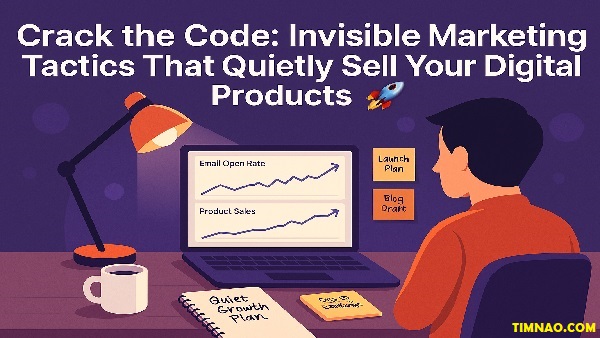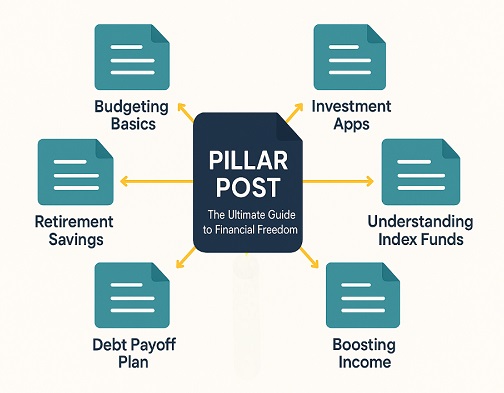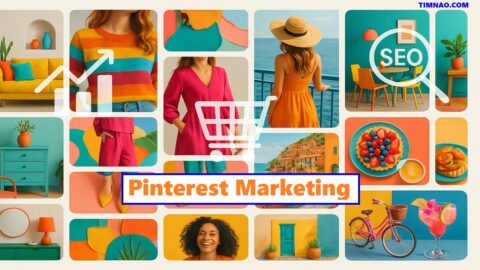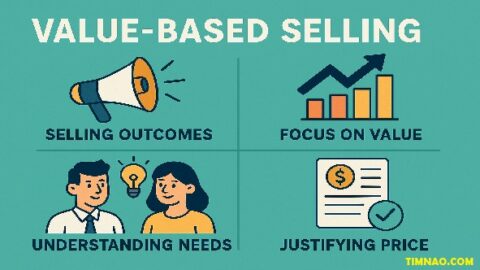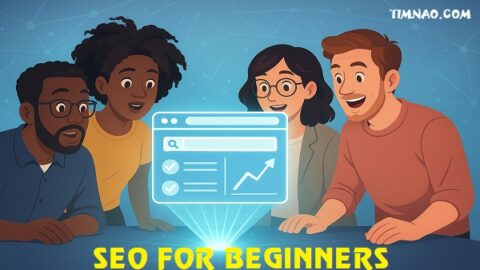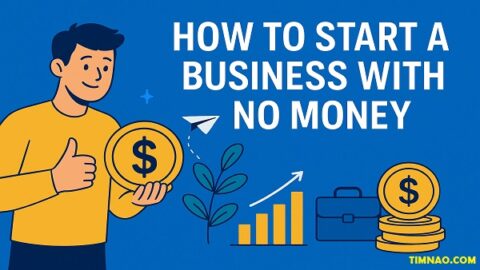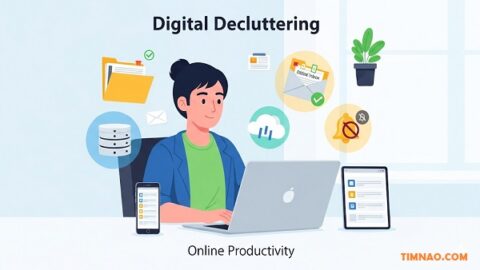Crack the Code: Invisible Marketing Tactics That Quietly Sell Your Digital Products 🚀
Invisible marketing is quietly revolutionizing the way digital entrepreneurs sell online—especially in 2025. While most creators chase trends, algorithms, and viral videos, a growing number of savvy business owners are achieving real success without ever posting a single Reel or Tweet. This stealthy, low-profile strategy isn’t just possible—it’s powerful, scalable, and refreshingly stress-free.
If you’ve ever felt overwhelmed by the pressure to build a personal brand or stay “always online” to make sales, this guide is for you. In the next few sections, you’ll discover a complete blueprint to sell digital products without social media, using invisible marketing tactics that prioritize sustainability, authenticity, and long-term growth.
Ready to build a thriving online business—quietly? Let’s break down the step-by-step system you can start using today:
📚 Table of Contents
- 🎯 Why Invisible Marketing Is Winning in 2025
- 🧍 How to Truly Know Your Audience Without Social Media
- 🔍 SEO Mastery: Getting Found Without Facebook or TikTok
- 📬 Smart Email Marketing that Converts Silently
- 🤝 Partnerships & Affiliates: Amplify Reach Without Being Online
- 🛍️ Top Platforms to Sell Digital Products—No Profile Needed
- 💰 Paid Ads Beyond Social: Powerful Alternatives in 2025
- ✍️ Content Marketing That Doesn’t Feel Like Marketing
- 🖥️ Webinars & Workshops Without Followers
- 📈 Boost Conversions Like a Pro—No Likes Required
- ✨ Real Blog Strategy to Drive Long-Term Traffic
- 🚀 Launching a Product Quietly, but Impactfully
- 📊 Metrics to Track Your Silent Success
- 🧰 Recommended Tools for Invisible Entrepreneurs
- 🧠 Final Thoughts: The Future of Discreet Digital Sales
🎯 Why Invisible Marketing Is Winning in 2025
Let’s be honest: the digital landscape is changing. The very idea that you must be on every social platform to succeed is becoming outdated. In 2025, a more intentional, discreet marketing strategy isn’t just a preference; it’s a competitive advantage.
Here’s why invisible marketing is becoming the go-to approach for savvy creators:
- The Rise of “Social Media Fatigue”: Your audience is tired. They are bombarded with thousands of ads and posts every day. The constant noise has led to widespread burnout. By opting out, you position yourself as a focused, high-value alternative—a calm port in a digital storm. People are actively seeking authentic connections away from the performative nature of social media.
- Privacy Is the New Premium: With data breaches making headlines and privacy regulations like GDPR becoming stricter, consumers are more protective of their data than ever. Invisible marketing often relies on permission-based channels like email, where you have a direct, trusted line of communication. This builds deep trust that a fleeting social media ad simply can’t match.
- You Own Your Platform: When you build your business on social media, you’re building on rented land. An algorithm change can wipe out your reach overnight. With invisible marketing, you focus on assets you control: your website, your email list, and your content. This creates a stable, predictable foundation for growth that isn’t subject to the whims of a tech giant.
- Focus on Long-Term Value: A tweet has a lifespan of minutes. An Instagram story lasts 24 hours. A well-crafted blog post optimized for search engines can bring you traffic and sales for years. This is the core of invisible marketing—trading short-term vanity metrics for long-term, sustainable results.
🧍 How to Truly Know Your Audience Without Social Media
The biggest myth about ditching social media is that you’ll lose touch with your audience. The truth is, you can gain a much deeper, more accurate understanding of your customers by using more direct methods. Instead of guessing based on likes, you’ll be working with real data.
Uncover Gold with Surveys and Questionnaires
The most direct way to understand your audience is to simply ask them. Stop guessing what they want and let them tell you directly.
- How to Do It: Use tools like SurveyMonkey, Typeform, or even the free Google Forms to create simple, effective surveys. Ask questions about their biggest challenges, what they hope to achieve, and what kind of solutions they’re looking for.
- Actionable Tip: Offer a small incentive for completing the survey, like a 10% discount on a future product or a free digital download. You’ll not only get priceless insights but also build goodwill with your audience.
Decode Behavior with Website Analytics
Your website is a treasure trove of data. Tools like Google Analytics 4 can tell you exactly what your audience finds interesting, where they come from, and what makes them click “buy.”
- Key Metrics to Watch:
- Most Visited Pages: This tells you what content resonates the most. If your blog post on “Time-Blocking for Freelancers” is a hit, that’s a huge clue about what digital product to create next.
- Traffic Sources: Are people finding you through Google search, a referral from another website, or by typing your URL directly? This shows you which marketing channels are working.
- Bounce Rate: If visitors leave after viewing only one page, your content might not be meeting their expectations. This is a signal to improve your messaging or page layout.
Become a Detective with Competitor Analysis
Your competitors have already done some of the work for you. By studying them, you can learn what works (and what doesn’t) with your shared target audience.
- How to Do It: Use tools like SimilarWeb to see where your competitors’ traffic comes from or Semrush to see the keywords they rank for. Look at their product offerings, pricing, and the language they use. This isn’t about copying; it’s about identifying gaps in the market that your digital product can fill.
🔍 SEO Mastery: Getting Found Without Facebook or TikTok
Search Engine Optimization (SEO) is the single most powerful tool in your invisible marketing arsenal. It’s the art and science of making your content appear at the top of Google when your ideal customer is searching for a solution. When done right, SEO is like having a silent salesperson working for you around the clock.
Find Your Golden Keywords
Keywords are the bridge between your customer’s problem and your product’s solution. Your goal is to find the exact phrases they are typing into Google.
- Think Like Your Customer: Don’t just target broad terms like “digital planner.” Get specific. Your customer is likely searching for “printable weekly planner for ADHD” or “digital budget tracker for Google Sheets.” These are called long-tail keywords, and they convert incredibly well because they are so specific.
- Essential Tools: Use tools like Google Keyword Planner (free with a Google account), Ubersuggest, or Ahrefs to find keywords with good search volume and low competition.
Master On-Page SEO for Your Products and Blog
On-page SEO refers to optimizing the elements on your website to tell Google exactly what your content is about.
- Compelling Titles and Descriptions: Your page title and meta description are the first things a user sees in search results. Make them irresistible. Include your main keyword and a clear benefit. For example: “The Ultimate Digital Budget Tracker | Gain Financial Clarity Today.”
- Create High-Quality, Helpful Content: As of 2024-2025, Google’s “Helpful Content Update” prioritizes content made for humans, not just search engines. Your product descriptions, blog posts, and landing pages should be genuinely useful, in-depth, and answer the user’s questions completely. This is the cornerstone of modern SEO.
- Structure Your Content: Use headings (H1, H2, H3) to break up your text and make it easy to read. Google loves well-structured content, and so do your visitors.
Build Authority with Off-Page SEO
Off-page SEO involves actions taken outside of your website to build its authority and trustworthiness. The most important factor here is backlinks—links from other websites to yours.
- Guest Posting: Write an article for a respected blog in your niche. For example, if you sell a project management template, write a guest post for a popular productivity blog. You’ll get exposure to a new audience and a valuable backlink.
- Collaborate with Partners: Partner with another creator for a joint venture, like a co-hosted webinar. When they link to your shared landing page, you earn a backlink.
📬 Smart Email Marketing that Converts Silently
Email is the undisputed champion of invisible marketing. It’s a direct, personal, and incredibly profitable channel that you completely control. Unlike a social media post, an email lands directly in your subscriber’s private space. Treat that privilege with respect, and you’ll build a loyal audience that buys from you again and again.
Build Your Most Valuable Asset: The Email List
Your email list is your business’s lifeline. Your number one job is to grow it with people who are genuinely interested in what you have to offer.
- Create an Irresistible Lead Magnet: A lead magnet is something valuable you offer for free in exchange for an email address. This could be a checklist, a mini-e-book, a template, or a 5-day email course. It must solve a small but significant problem for your target audience.
- Strategic Sign-up Forms: Place clear, compelling sign-up forms on your website: at the end of blog posts, in your website’s footer, and as a dedicated landing page.
The Magic of Segmentation and Personalization
Never send the same email to everyone on your list. The key to high conversion rates is sending the right message to the right person at the right time.
- How to Segment: Divide your audience into smaller groups (segments) based on their interests or actions. For example, you can have a segment for people who downloaded your “Beginner’s Guide to Podcasting” and another for those who bought your “Advanced Audio Editing” course.
- Personalize Your Message: Modern email platforms like ConvertKit (great for creators), MailerLite, or the rapidly growing Beehiiv make this easy. You can use their name, reference a product they purchased, and send content tailored to their specific interests. This simple step can dramatically increase your open and click-through rates.
Automate Your Sales with Email Sequences
Automation is how you make sales in your sleep. An automated email sequence (or “autoresponder”) is a series of pre-written emails that are sent automatically when someone joins your list or takes a specific action.
- The Welcome Sequence: This is the most important automation. When someone subscribes, send a series of 3-5 emails that:
- Welcomes them and delivers the lead magnet.
- Tells your story and builds a connection.
- Provides more value and introduces a problem.
- Presents your digital product as the solution.
- Creates urgency with a limited-time offer.
🤝 Partnerships & Affiliates: Amplify Reach Without Being Online
You don’t need to be everywhere when you can strategically tap into other people’s audiences. Partnerships and affiliate programs are a core part of a discreet marketing strategy, allowing you to grow your reach exponentially through trusted recommendations.
Forge Powerful Strategic Partnerships
A strategic partner is another business or creator who serves a similar audience but isn’t a direct competitor. By working together, you both win.
- How to Find Partners: Look for creators in adjacent niches. If you sell Notion templates, you could partner with a productivity YouTuber. If you sell keto meal plans, partner with a fitness blogger.
- Types of Collaborations:
- Content Swaps: You write a guest post for their blog, and they write one for yours.
- Lead Magnet Swaps: You promote their free guide to your email list, and they do the same for you.
- Joint Webinars: Co-host a free training session. It’s a powerful way to provide immense value and cross-promote your products.
Build Your Own Sales Team with an Affiliate Program
An affiliate program is an automated system where you pay people (your affiliates) a commission for every sale they refer to you. It’s performance-based marketing at its best—you only pay when you make a sale.
- Setting It Up: Platforms like Gumroad and ThriveCart have built-in affiliate systems that make it incredibly easy to manage. You simply set a commission percentage (e.g., 30-50% for digital products is common), and the platform handles the tracking and payouts.
- Recruiting Affiliates: Your best affiliates are often your most passionate customers. Invite them personally to join your program. You can also list your program on affiliate networks or reach out to bloggers and influencers in your niche who you think would be a great fit.
🛍️ Top Platforms to Sell Digital Products—No Profile Needed
Where you sell your digital products matters. You need a platform that is simple, reliable, and doesn’t require you to maintain a public profile. Here are some of the best options for the invisible entrepreneur.
All-in-One Creator Platforms
These platforms are designed specifically for creators to sell digital products like e-books, templates, and courses. They handle payment processing, file delivery, and often have built-in marketing tools.
- Gumroad: A favorite among creators for its simplicity. You can set up a product and start selling in minutes. It has a clean interface and built-in email and affiliate marketing tools.
- Podia: An excellent choice if you sell a mix of digital products, including online courses, webinars, and community memberships. It’s a true all-in-one solution.
- Lemon Squeezy: A modern and robust platform that’s gaining popularity, especially for selling software and digital subscriptions. It handles global sales tax, which is a massive headache saver.
Your Own E-commerce Store
For ultimate control, nothing beats selling directly from your own website.
- WooCommerce: If you have a WordPress website, WooCommerce is a powerful, free plugin that turns your site into a full-featured online store. It’s endlessly customizable.
- Shopify: While known for physical products, Shopify is also fantastic for digital goods. It’s incredibly user-friendly and offers powerful analytics and app integrations.
💰 Paid Ads Beyond Social: Powerful Alternatives in 2025
When you hear “paid ads,” you probably think of Facebook or Instagram. But some of the most effective and targeted advertising happens far away from social feeds. This is a crucial way to sell digital products without social media.
The Unmatched Power of Search Engine Ads
When someone is actively searching for a solution on Google, their intent to buy is sky-high. Search Engine Marketing (SEM) puts your product right in front of them at that exact moment.
- How It Works: Using Google Ads, you bid on keywords relevant to your product. When a user searches for that keyword, your ad can appear at the top of the results. You only pay when someone clicks.
- Example: A user searches “best meal prep templates for busy moms.” Your Google Ad appears: “Effortless Meal Prep Templates – Save 5 Hours a Week. Download Now!” This is incredibly direct and effective.
Native Advertising: The Ads That Don’t Look Like Ads
Native ads are designed to blend in with the content of the website they appear on. They often look like “recommended articles” at the bottom of a news story.
- Platforms to Use: Services like Taboola and Outbrain place your content on major publisher websites like CNN or Business Insider.
- Best Practice: Don’t link directly to a sales page. Link to a high-value blog post or a case study. The goal is to attract the reader with useful content first, then lead them to your product.
Ads in Niche Newsletters and Podcasts
This is one of the most underrated strategies for 2025. Find newsletters or podcasts that your ideal customers love and pay to sponsor an issue or an episode. This is a powerful form of invisible marketing because it comes as a trusted recommendation from a source the audience already follows.
✍️ Content Marketing That Doesn’t Feel Like Marketing
The goal of content marketing is to attract and retain an audience by creating and distributing relevant and valuable content. It’s not about selling; it’s about serving. When you help your audience solve their problems, they will naturally trust you and want to buy from you.
Create Pillar Content That Lasts for Years
Pillar content is a substantial and informative piece of content that can be broken down into many smaller pieces. Think of it as the ultimate guide on a topic in your niche.
- Example: If you sell a course on learning to code, your pillar content could be a 5,000-word blog post titled “The Ultimate Guide to Learning Python in 2025.”
- The Benefit: This single piece of content can become the foundation of your entire marketing strategy. It will rank on Google for years, you can turn chapters into individual blog posts, create a free e-book from it, and use it as the script for a YouTube series.
Diversify Your Content Formats
People consume content in different ways. Go beyond just blog posts.
- E-books and Whitepapers: These are perfect for in-depth guides and make excellent lead magnets to grow your email list.
- Infographics: Turn complex data or a step-by-step process into a visually appealing infographic using tools like Canva. They are highly shareable and can earn you backlinks.
- Case Studies: Show, don’t just tell. A detailed case study demonstrating how a previous customer achieved success with your product is one of the most persuasive pieces of content you can create.
🖥️ Webinars & Workshops Without Followers
You don’t need thousands of followers to host a successful online event. Webinars and workshops are one of the best ways to connect with your audience in real-time, demonstrate your expertise, and sell high-ticket digital products.
Plan Your Event for Maximum Impact
Success is all in the planning. Focus on delivering immense value.
- Choose a Hyper-Specific Topic: Don’t host a webinar on “Marketing.” Host one on “The 3-Step SEO System to Triple Your Blog Traffic in 90 Days.” The more specific the promise, the more compelling it is.
- Select the Right Platform: Tools like Zoom or GoToWebinar are industry standards and make hosting a professional event easy.
Promote Your Webinar the Invisible Way
How do you get people to show up without a social media announcement?
- Your Email List: This is your primary promotion channel. Send a series of emails announcing the webinar, highlighting the benefits, and reminding people to register.
- Strategic Partners: Remember those partnerships we talked about? Ask a partner to promote the webinar to their audience in exchange for a commission on any sales generated from their referrals.
- Paid Ads: Run targeted Google Ads for keywords related to your webinar topic.
📈 Boost Conversions Like a Pro—No Likes Required
Getting traffic to your website is only half the battle. Conversion Rate Optimization (CRO) is the process of turning those visitors into customers. Even small tweaks can lead to a huge increase in sales.
The Power of A/B Testing
A/B testing (or split testing) is where you compare two versions of a webpage to see which one performs better. You never have to guess what works; you can test it!
- What to Test: You can test almost anything: your headline, your call-to-action (CTA) button color, your product images, or your pricing.
- Tools for the Job: Google Optimize is a powerful free tool for A/B testing. Platforms like Optimizely offer even more advanced features.
Craft Irresistible Calls to Action (CTAs)
Your CTA is the most important element on your sales page. It needs to be clear, compelling, and action-oriented.
- Bad CTA: “Submit”
- Good CTA: “Download My Free E-book”
- Great CTA: “Yes, I Want to Master SEO!”
Use strong verbs and focus on the benefit the user will get by clicking.
Build Trust with Social Proof
Social proof is the psychological phenomenon where people assume the actions of others reflect correct behavior. You can build this without social media.
- Testimonials: Feature glowing reviews from happy customers, complete with their name and photo if possible.
- Case Studies: As mentioned before, detailed success stories are incredibly persuasive.
- “As Seen On” Banners: If you’ve been featured on a well-known blog or publication, display their logos on your site.
✨ Real Blog Strategy to Drive Long-Term Traffic
A blog is not a diary. It’s a strategic business asset and the engine of your invisible marketing machine. A well-executed blog strategy can drive free, targeted traffic to your digital products for years to come.
The Hub-and-Spoke Model
This is the secret to dominating a niche with your blog.
- The Hub (Pillar Post): This is your big, comprehensive “Ultimate Guide” on a broad topic (e.g., “The Ultimate Guide to Freelance Writing”). It should be 3,000+ words and cover the topic from A to Z.
- The Spokes (Cluster Posts): These are shorter, more specific blog posts that dive deeper into one section of your pillar post (e.g., “How to Find Your First Freelance Writing Client,” “5 Best Tools for Freelance Writers,” “How to Set Your Freelance Writing Rates”).
- The Magic: Each spoke post links back up to the hub post. This tells Google that your hub post is the definitive authority on the topic, boosting its ranking and driving massive traffic.
Hub-and-Spoke Content Strategy Diagram
Your 6-Month Content Plan
Consistency is key. Here’s a sample plan to get you started:
- Month 1: Identify your main topic and do keyword research. Write and publish your first pillar post (Hub).
- Month 2: Write and publish 4 spoke posts, all linking back to your pillar post.
- Month 3: Reach out to 5 blogs for guest posting opportunities to build backlinks. Write and publish another 4 spoke posts.
- Month 4-6: Continue publishing 1-2 spoke posts per week. Start work on your second pillar post on a new topic.
This disciplined approach builds SEO momentum that will pay dividends for years, quietly selling your digital products in the background.
🚀 Launching a Product Quietly, but Impactfully
A product launch doesn’t need to be a loud, flashy spectacle. A discreet marketing strategy for a launch focuses on building anticipation with a targeted group of people who are most likely to buy.
The Pre-Launch: Building Buzz
This phase is all about building an email list of interested people before your product is even ready.
- Create a “Coming Soon” Landing Page: This is a simple, one-page website that describes your upcoming product and its main benefit. The only goal of this page is to get people to sign up for your “waitlist” to be notified when it launches.
- Offer an Early-Bird Incentive: Encourage sign-ups by offering an exclusive launch discount or a special bonus only for those on the waitlist.
The Launch: An Email-Powered Event
Your launch will happen primarily over email. Plan a 3-5 day email sequence to your waitlist.
- Day 1 (Launch Day): Announce that the product is live! Remind them of the problem it solves and their special early-bird offer.
- Day 2: Share a powerful testimonial or a mini case study.
- Day 3: Address common questions or objections in a Q&A style email.
- Day 4 (Urgency): Remind them that their special offer is ending soon (“Last Chance!”).
- Day 5 (Final Call): Send a final, short email a few hours before the offer expires.
The Post-Launch: Nurturing Your New Customers
The work isn’t over once the launch ends. Send a thank-you email to everyone who purchased. Ask for feedback and testimonials that you can use to promote the product in the future.
📊 Metrics to Track Your Silent Success
When you ditch social media, you also ditch vanity metrics like likes, shares, and follower counts. Instead, you focus on the metrics that actually move the needle in your business.
- Organic Traffic: How many people are visiting your website from search engines? (Track in Google Analytics). This is a direct measure of your SEO success.
- Email List Growth Rate: How many new subscribers are you getting each month? This is the health-o-meter for your business.
- Email Open/Click-Through Rates: Are people engaging with your emails? This tells you if your messaging is resonating.
- Conversion Rate: What percentage of website visitors or email subscribers are buying your product? This is the ultimate measure of your marketing effectiveness.
- Customer Lifetime Value (CLV): How much is a customer worth to your business over time? This helps you understand how much you can afford to spend to acquire a new customer.
🧰 Recommended Tools for Invisible Entrepreneurs
Having the right tools can automate your processes and make your invisible marketing efforts much more effective. Here’s a curated list to get you started:
- For SEO:
- Google Analytics: Essential and free for tracking website traffic.
- Semrush: An all-in-one powerhouse for keyword research, competitor analysis, and site audits.
- For Email Marketing:
- ConvertKit: Built by creators, for creators. Excellent for automation and segmentation.
- Beehiiv: A modern platform focused on helping newsletters grow and monetize.
- For Selling Digital Products:
- For Website & Landing Pages:
- WordPress.org: The most powerful and flexible platform for building a website you truly own.
- Carrd: Perfect for creating simple, beautiful one-page sites for your “coming soon” pages or lead magnets.
🧠 Final Thoughts: The Future of Discreet Digital Sales
The world of digital marketing is undeniably moving towards a more private, intentional, and human-centric space. The invisible marketing tactics outlined here are not a temporary trend; they are the future for creators who value sustainability, authenticity, and a direct relationship with their audience.
As AI continues to make personalization easier and consumers become even more protective of their privacy, a discreet marketing strategy will become an even greater superpower. You are now equipped with the strategies to build a thriving business that respects your customers’ attention and your own well-being.
You don’t need to be loud to be successful. You just need to be smart, strategic, and genuinely helpful. Now go build something amazing—quietly.

